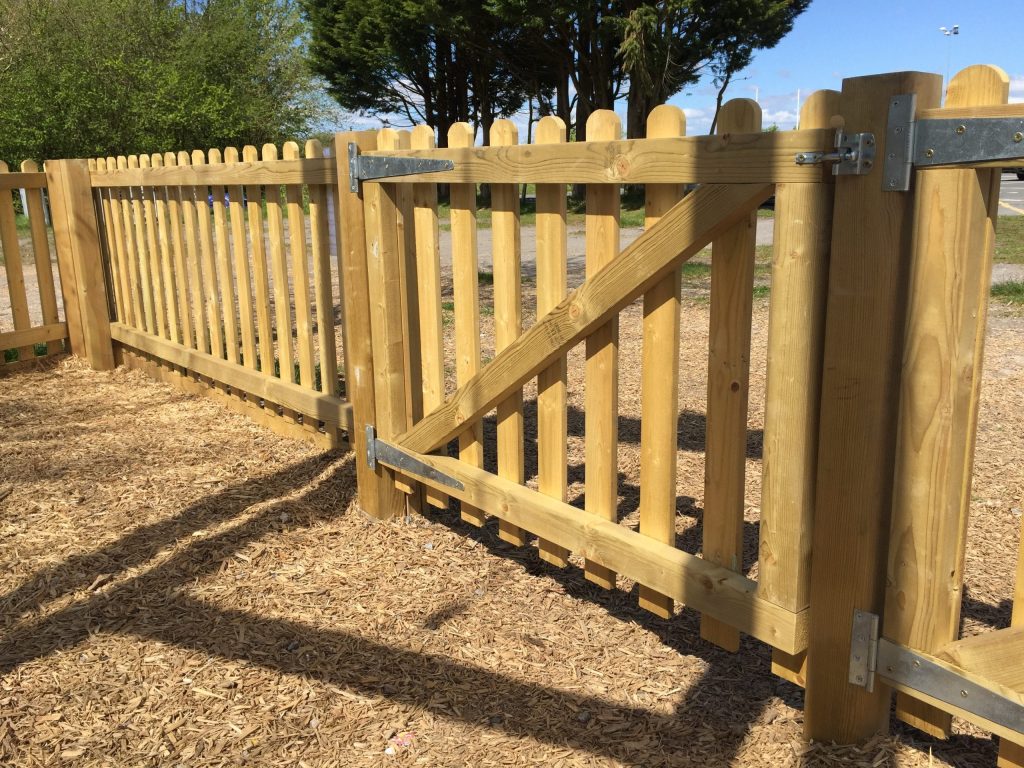
Hillhead Joiners are fencing contractors based in Stirling. We supply, install, fit, repair all types of timber fencing & wooden fence panels to the Stirling and the surrounding area.
Fencing Contractors Stirling
Timber fencing has been a popular choice for property boundaries, privacy, and aesthetics for centuries. Timber’s natural beauty, durability, and versatility make it a go-to material for various fencing styles. In this article, we’ll explore different types of timber fencing, each with its unique characteristics and applications.
View our Google reviews on the left menu, which speak volumes.

- Picket Fencing: Picket fencing is perhaps one of the most classic and iconic timber fence styles. It consists of evenly spaced vertical slats or pickets attached to horizontal rails. Typically, picket fences are shorter in height and serve as decorative boundaries for front yards or gardens. They create a warm and welcoming atmosphere and can be left natural or painted in various colors to suit your home’s aesthetics.
- Privacy Fencing: For those seeking seclusion and security, privacy fencing is an excellent choice. These fences are taller and feature closely spaced vertical boards with no gaps between them, providing a solid barrier to shield your property from prying eyes. They are ideal for backyards and can be customized with lattice tops or decorative elements for added style.
- Split Rail Fencing: Split rail fencing is a rustic and charming option, often used in rural or country settings. It consists of horizontal rails with notched ends, which fit into vertical posts, creating a simple yet effective enclosure. Split rail fences are excellent for delineating property lines and adding a touch of natural beauty without obstructing views.
- Ranch Fencing: Ranch fencing, also known as post and rail fencing, is a more substantial version of split rail fencing. It’s commonly used in large properties and farms to contain livestock. These fences consist of two or three horizontal rails connected to sturdy, evenly spaced posts. They provide durability and an open, airy feel to rural landscapes.

Fencing Contractors Stirling
More styles of timber fencing you may see in Stirling
Lattice Fencing: Lattice fencing is an elegant choice that combines timber with decorative patterns. It features a grid-like structure made of thin wooden strips, creating openings that allow both light and air to pass through while maintaining some privacy. Lattice can be used as an accent on top of other fences or as a standalone fence.
- Board-on-Board Fencing: Board-on-board fencing is a variation of privacy fencing that offers a more visually appealing look. It consists of overlapping vertical boards attached to horizontal rails, with each board alternating on either side of the rails. This design not only provides privacy but also a more polished appearance.
- Stockade Fencing: Stockade fencing is a robust and secure option, consisting of tightly spaced vertical boards attached to horizontal rails. The boards are often pointed at the top, making it challenging to climb over. This style is ideal for homeowners seeking maximum privacy and security.
- Shadowbox Fencing: Shadowbox fencing is a creative approach to privacy that maintains an open feel while still providing seclusion. It consists of staggered rows of pickets on each side of the horizontal rails, creating a visually appealing pattern. When viewed from an angle, the fence allows light and airflow, making it a suitable choice for windy areas.
- Post and Panel Fencing: Post and panel fencing is a modern timber fencing option that combines the durability of timber with a sleek, minimalist design. It typically features large, rectangular panels of timber held between sturdy posts, creating a clean and contemporary look. This style works well for both residential and commercial properties.
- Decorative Timber Fencing: Lastly, decorative timber fencing encompasses a wide range of styles, from scalloped or arched tops to ornate carvings and custom designs. These fences are often used as accents or focal points in landscaping projects, enhancing the overall aesthetic appeal of a property.

In conclusion, timber fencing offers a diverse array of styles to cater to various functional and aesthetic preferences. Whether you’re looking to create a charming front yard boundary, secure your backyard, or add a touch of rustic elegance to your property, there’s a timber fencing option to suit your needs. Timber’s timeless appeal and versatility make it a top choice for homeowners and property owners seeking both functionality and beauty in their fencing solutions.
Hillhead Jojners supply, fit, install all types of timber fencing. We also repairs storm damaged fencing of all types. We also offer domestic and commercial joinery and carpentry services to Aberfoyle, Balfron, Bridge of Allan, Buchlyvie, Callander, Cambusbarron, Causewayhead, Denny, Dollar, Doune, Dunblane, Falkirk, Gargunnock, Kippen, Larbert, Menstrie, Stenhousemuir, Tillicoultry and all of Central Scotland.
Here is a Google map of the Stirling area:
Fencing Contractors Stirling: Hillhead Joiners: 07710 096553
| Fence Contractor Stirling | Joiners Stirling | Wooden Floor Fitters Stirling |
